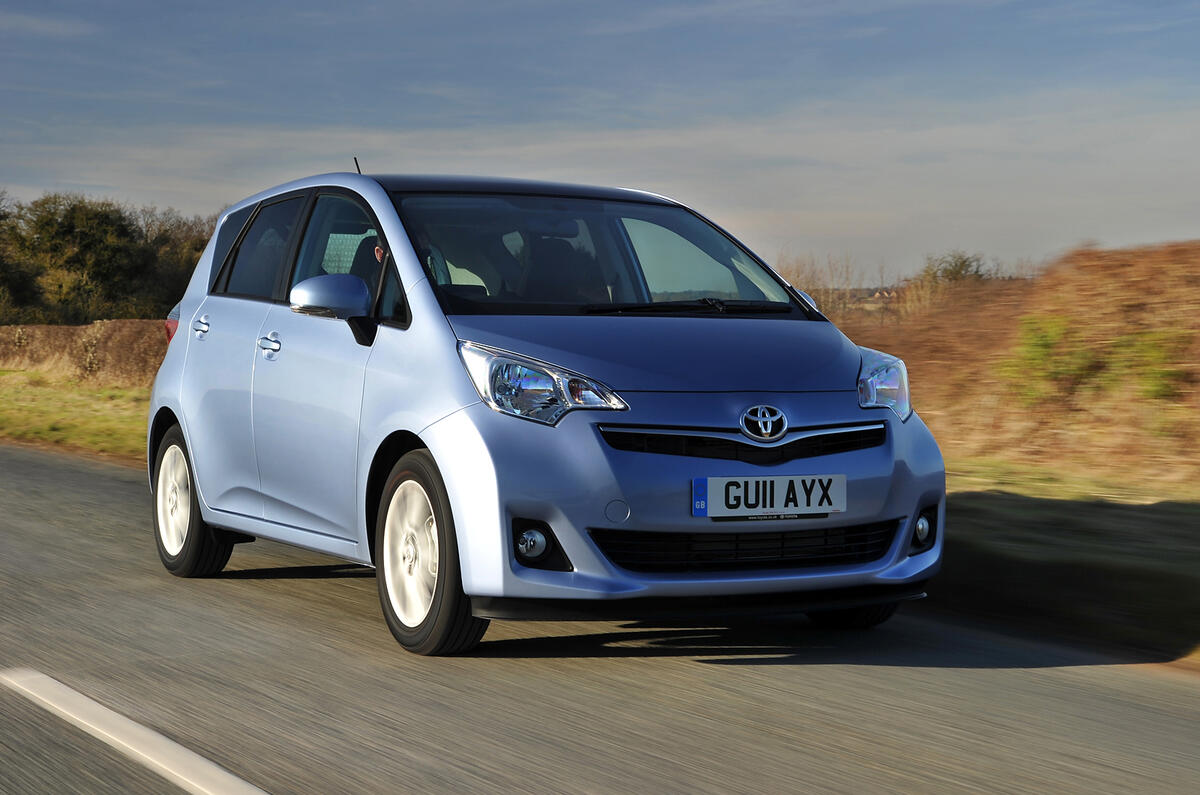This is where the Toyota Verso-S defines its place in the market and makes its most persuasive play to be purchased. From behind the wheel, it is the car’s headroom that seems particularly remarkable. In comparison with a standard supermini, there’s a huge amount of fresh air above your head, the effect of which is emphasised by the large standard glass roof of the T-Spirit model.
But in practice, for the average-sized adult at least, this provides no practical benefit, and elbow and leg room aren’t massively better than in a standard hatch.
It is also frustrating how underwhelming the dash is. A new touchscreen infotainment system is a welcome hi-tech touch, but low-grade graphics disappoint, and otherwise the differing textures on show fail to lift the overriding impression of underwhelming material quality.
Rear occupants get the real benefit of the more spacious interior, with usefully more legroom than you would expect of such a short car. Even those around six feet tall will have enough knee space when sitting behind a similar-sized front-seat occupant – something that even C-segment cars sometimes struggle to deliver.
But in a car majoring in versatility, it seems like an oversight that the Verso-S’s 60/40 rear bench does nothing more than fold flat. Not that the Verso-S suffers from a shortage of luggage room.
All Verso-Ss get a variable boot floor as standard, and 429 litres of load space with all the seats in place is very competitive given that a Honda Jazz offers 335 litres and a Citroën C3 Picasso 385-500 litres, depending on where its rear seats are positioned. But even with the spacious rear accommodation, the Verso-S could do with more of the versatility that its name suggests it should specialise in.




































